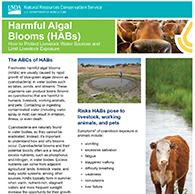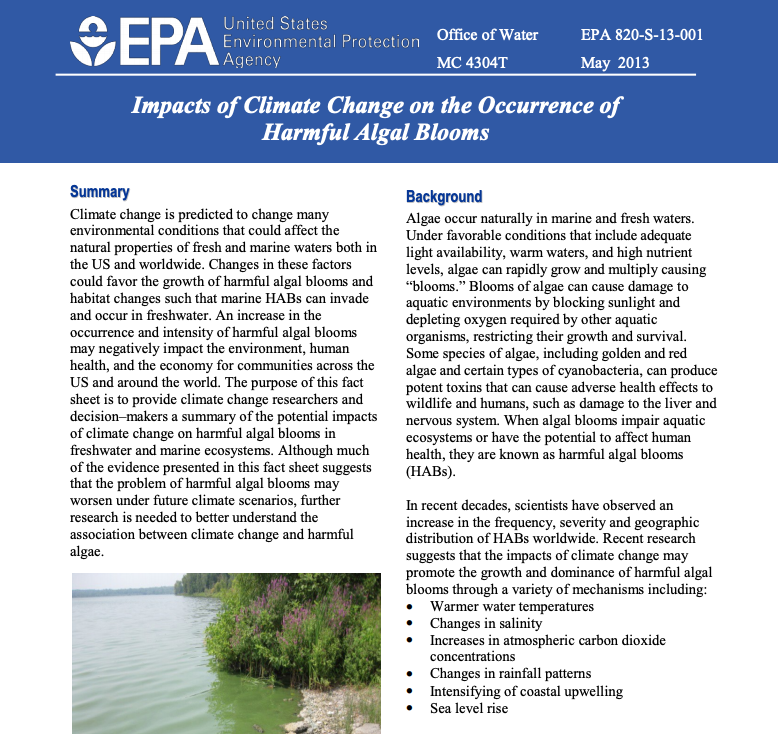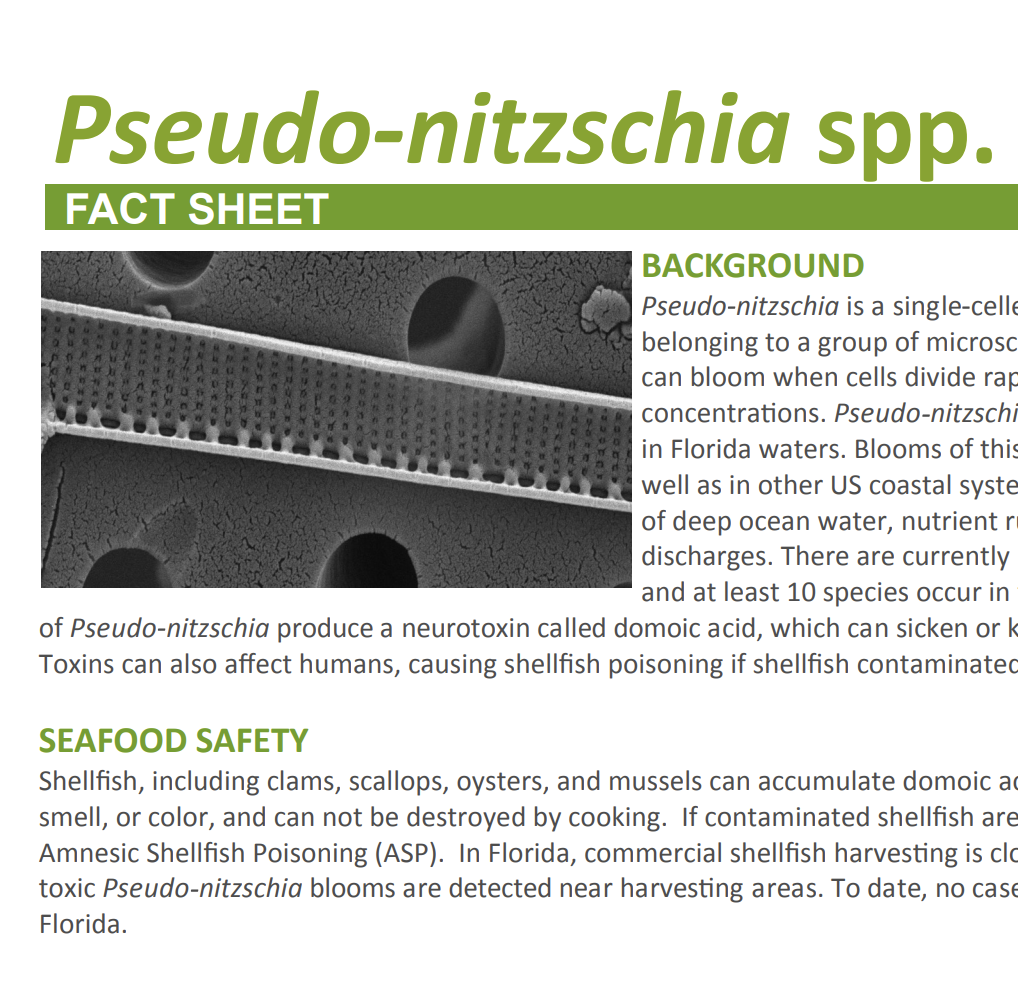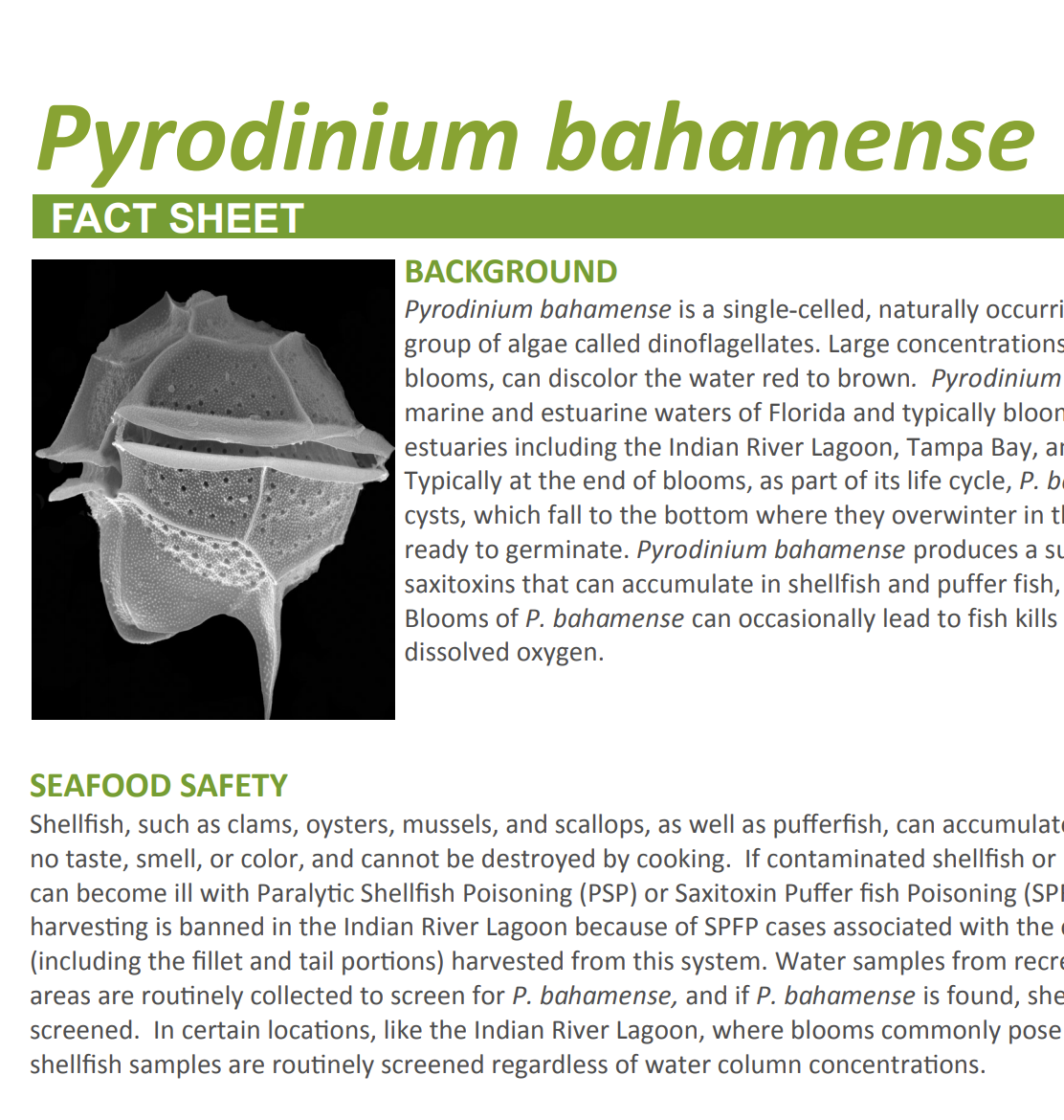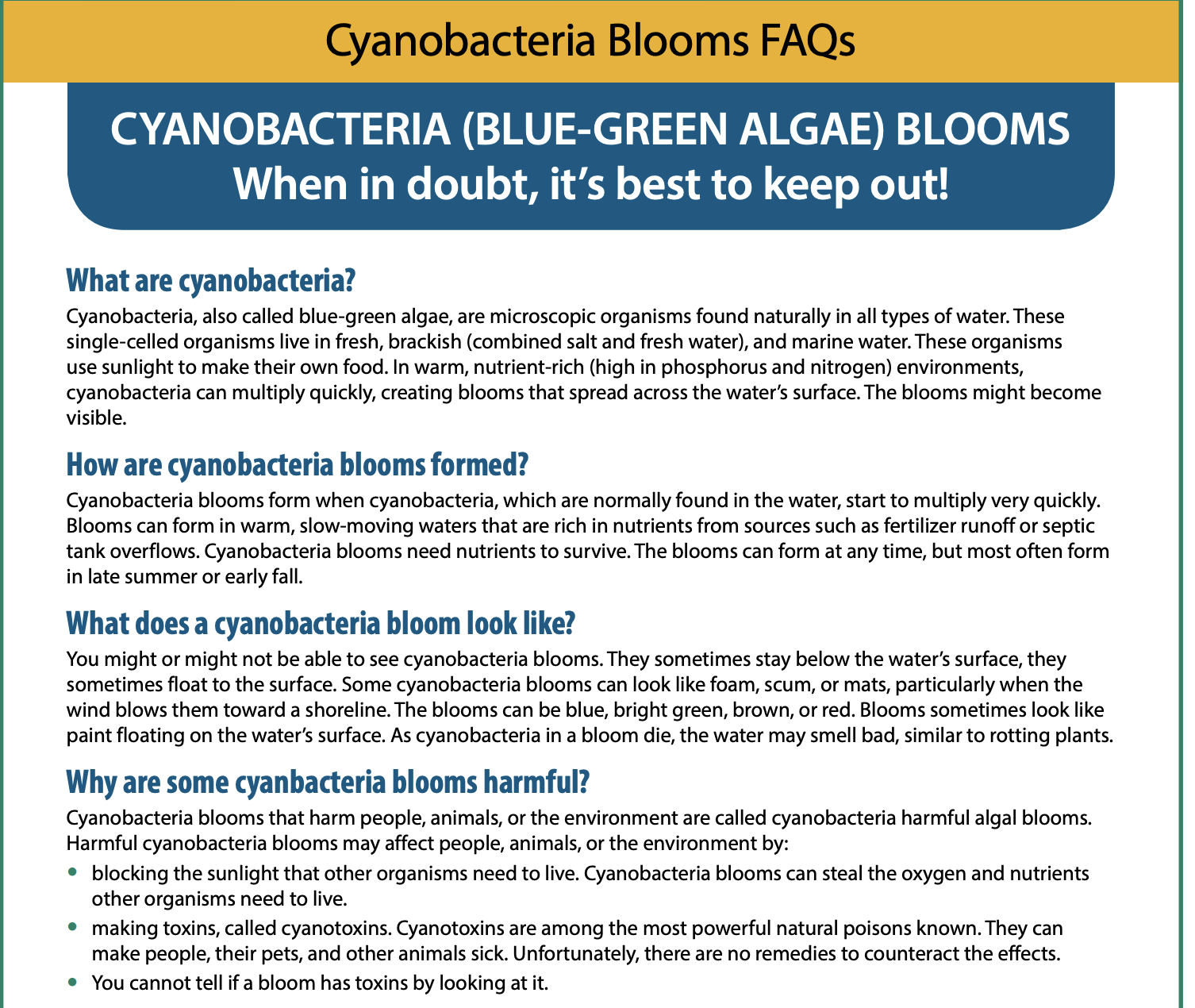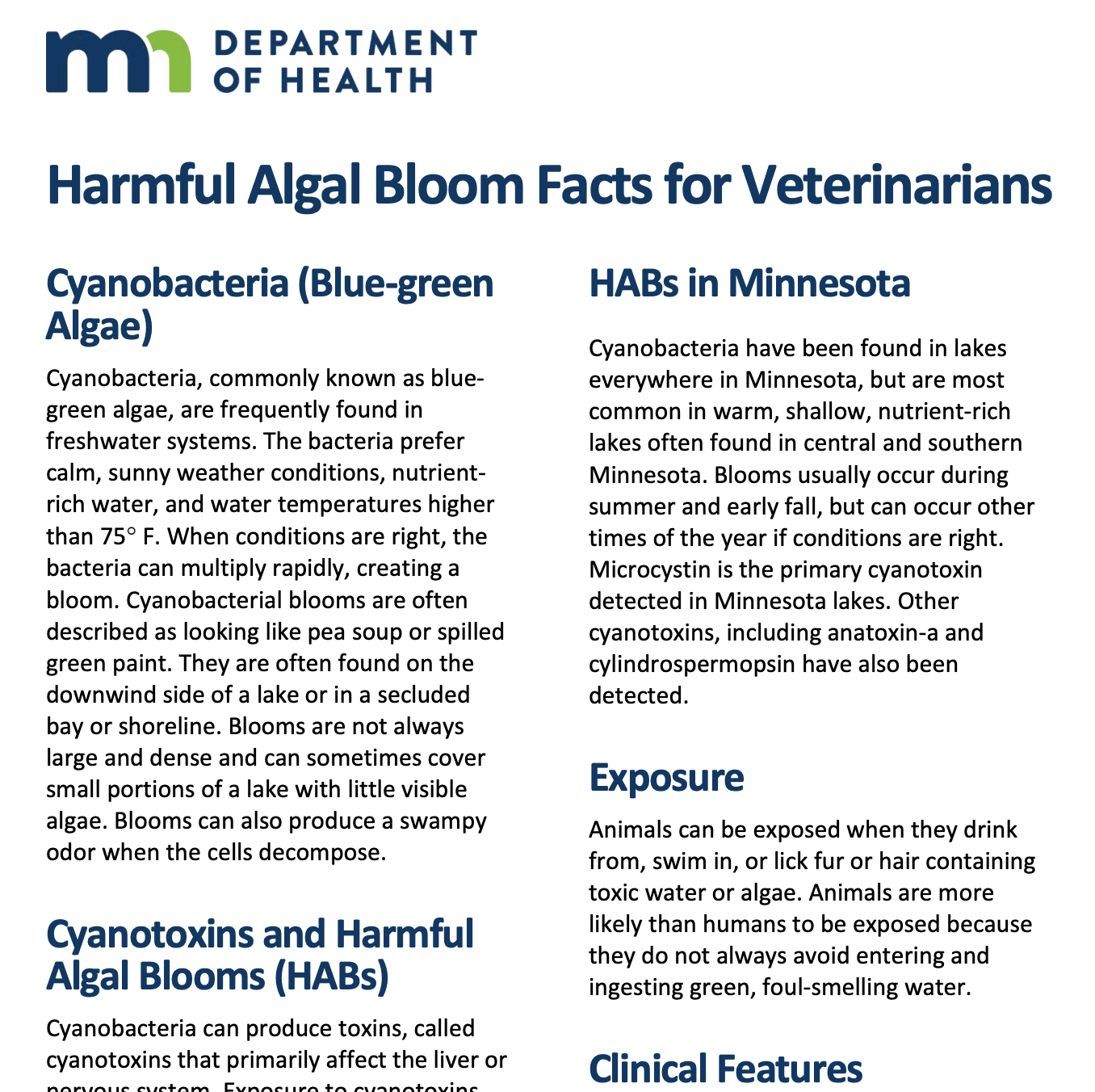Fact Sheets/Cards
Please note that the following are being provided for informational purposes, but we are unable to vouch for the thoroughness or accuracy of these materials. We are happy to include additional fact sheets or resources as they become available - please contact Mindy Richlen.
Harmful Algal Blooms (HABs): How to Protect Livestock Water Sources and Limit Livestock Exposure
This USDA fact sheet describes the risks of HABs to livestock and pets, and provides guidance on how to protect livestock from exposure.
Climate Change and Harmful Algal Blooms
This EPA fact sheet describes how climate change will impact the growth and occurrence of harmful algal blooms, or HABs.
Harmful Algal Blooms and Drinking Water
Fact sheet produced by the US EPA, with health advisory levels for cyanotoxins.
![]()
Dogs and HABs
Dogs and Harmful Algal Blooms, New York Sea Grant. Includes phone numbers for 24-hour pet poison hotlines.
Harmful Algal Blooms - Implications for Tap/Drinking Water and Recreational Waters
Fact sheet produced by Ohio EPA.

NOAA state of the science fact sheet
State of the Science Fact Sheet on HABs, prepared by NOAA.
Karenia brevis fact sheet
HAB fact sheet produced by the Florida Fish and Wildlife Conservation Commission.
Pseudo-nitzschia fact sheet
HAB fact sheet produced by the Florida Fish and Wildlife Conservation Commission.
Pyrodinium bahamense fact sheet
HAB fact sheet produced by the Florida Fish and Wildlife Conservation Commission.
![]()
Massachusetts Red Tide fact sheet
Red tide fact sheet from the Massachusetts Department of Health and Human Services. Click here to access a spanish language version of the fact sheet.
Facts about Cyanobacterial Harmful Algal Blooms for Poison Control Professionals
Fact sheet from the CDC provides an overview about cyanobacterial harmful algal bloom exposures in humans and animals. It covers signs and symptoms, laboratory testing, management, as well as contact resources.
Facts about Marine Harmful Algal Blooms for Poison Control Professionals
Fact sheet from the CDC provides an overview of marine HAB exposures in humans and animals. It covers associated illnesses, routes of exposures, signs and symptoms, laboratory testing, management, as well as contact resources.
Cyanobacteria blooms FAQ
CyanoHAB fact sheet from the CDC.

Gulf of Mexico HAB primer
Common questions and answers for stakeholders, decision makers, coastal managers, and the education community.
![]()
California red tide leaflet
Seafood Network Information Center, California: Red Tide: Questions and Answers (PDF file)
![]()
California natural marine toxins
Natural Marine Toxins: PSP and Domoic Acid (PDF format); sponsored by California Sea Grant, NOAA, and California State Resources Agency.

Florida Red Tide Fact Card
Florida red tide facts, including health and seafood safety tips. PDF format.

Lyngbya newsletter
A newsletter from the Lyngbya ECOHAB project

Lyngbya fact sheet
A fact sheet from the Lyngbya ECOHAB project

Texas Golden Alga Facts
Golden alga facts including tips for recognition, reporting, and health and safety. To obtain hard copies please e-mail hab@tpwd.state.tx.us

Texas Red Tide Fact Card
Health tips and seafood safety tips on Texas red tide.

